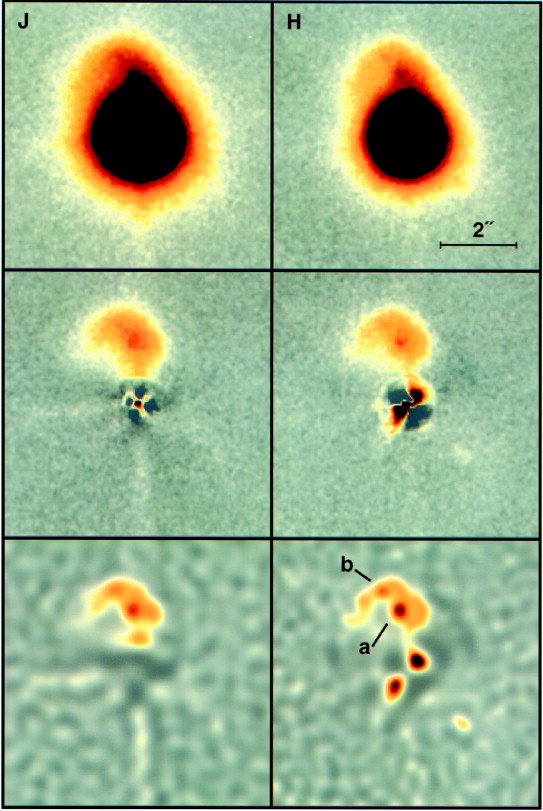
PG 1700+518: A quasar with a companion starburst galaxy
Credit: A. Stockton , G. Canalizo & L.M. Close
Institute for Astronomy, University of Hawaii, Honolulu, HI 96822 USA

Quasars or QSO (Quasi-Stellar Objects) are the most luminous known
objects. They emit between 10 and 1000 times the energy of our entire
Galaxy. In the optical however, they are very disappointing to look at
even with the most modern telescopes; they just look like ordinary
galactic stars. Hence their name. We now know that these objects are
associated with the cores of distant galaxies and that the size of
their emitting region is no larger than our own solar system ! The
energy source is commonly attributed to the accretion of gas onto a
massive central black hole. A powerful source of gas fueling may
be strong interactions between the QSO host and companion
galaxies. A clear case of such a strong interaction is seen in the QSO
PG 1700+518.
PG 1700+518, one of the more luminous low-redshift (z=0.3) quasar, was
known from previous ground-based imaging to show a bright, arclike
structure extending about 2 arcseconds to the north of its
nucleus. However, due of unsufficient angular resolution, the exact
nature of this extension was unclear. We show here recent
near-infrared images (J and H band) obtained with the University of
Hawaii Adaptive Optics System at the CFHT. Unaltered images of the QSO
are shown in the top row. They are strongly dominated by the light of
the central point-like QSO but some extended emission can be clearly
seen at the top. The middle row shows the same images after
subtraction of the central unresolved quasar emission and the bottom
row shows the result of a deconvolution process. These high angular
resolution images clearly demonstrate that the extension is a separate
companion galaxy, apparently in the process of merging with the QSO
host galaxy. The bright condensation a is probably the nucleus of the
companion galaxy while b may be a bright star-forming region. The
intense star formation activity of both the quasar and the companion
galaxy is likely powered by the interaction itself.
These images were obtained on July 1997 at the CFHT with the University
of Hawaii Adaptive Optics system and a 1024x1024 infrared camera
in the J (1.2 microns) and H (1.6 microns) photometric bands. Integration
times were 2 hrs at J and 1.5 hrs at H. The image is 6" wide.
Technical description:



